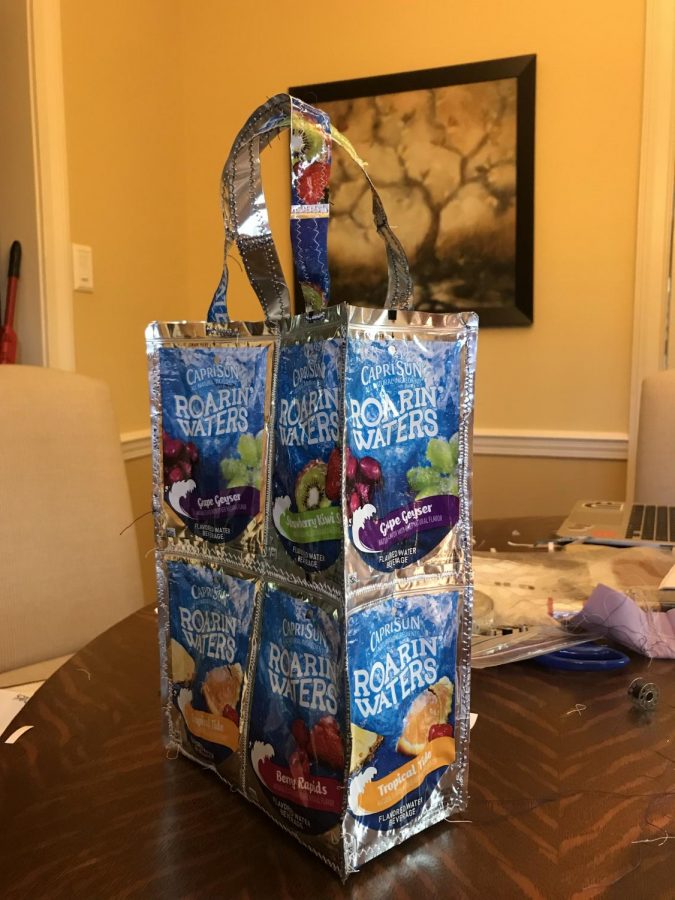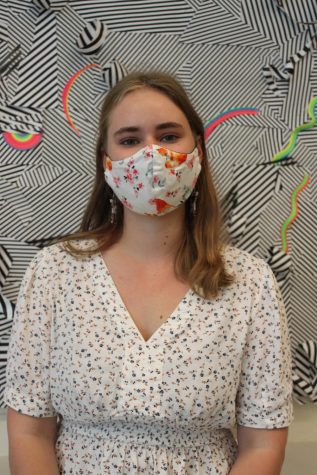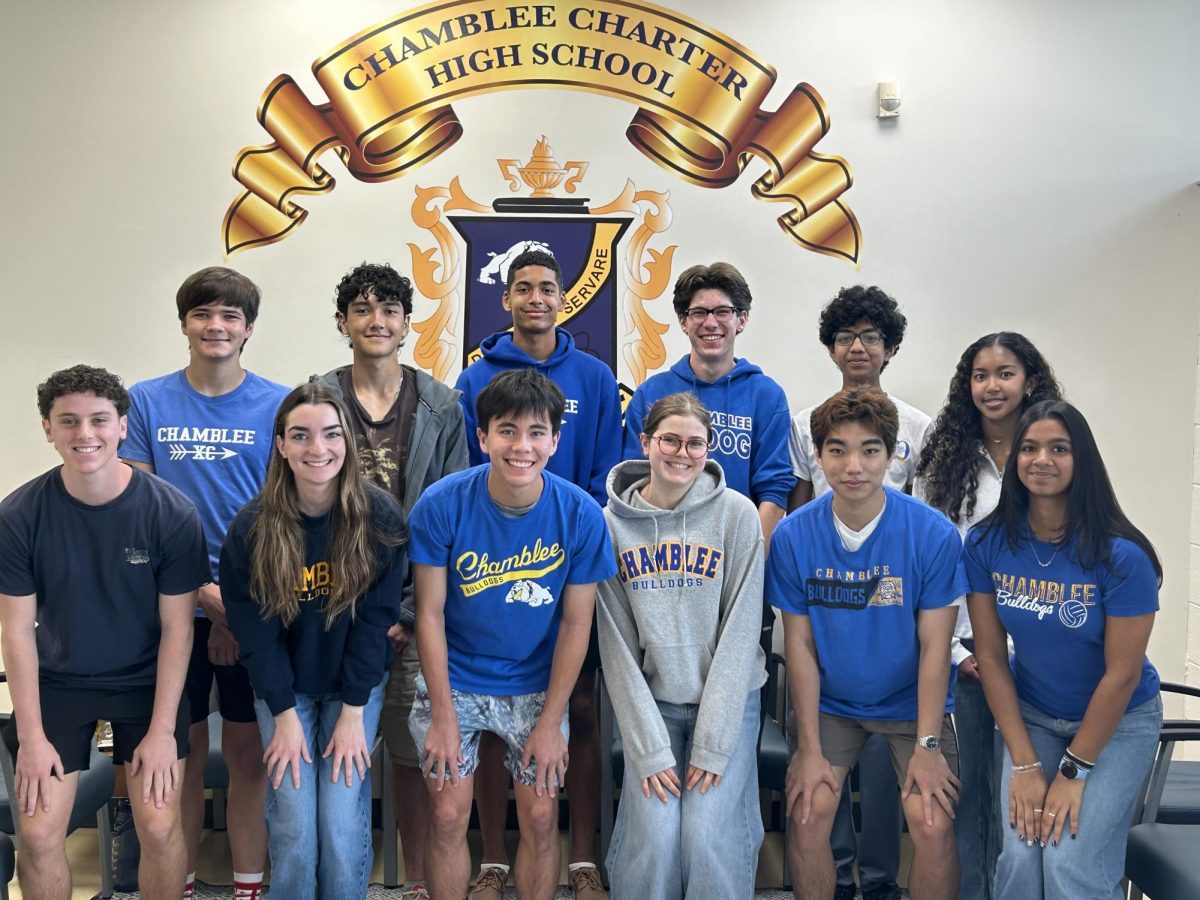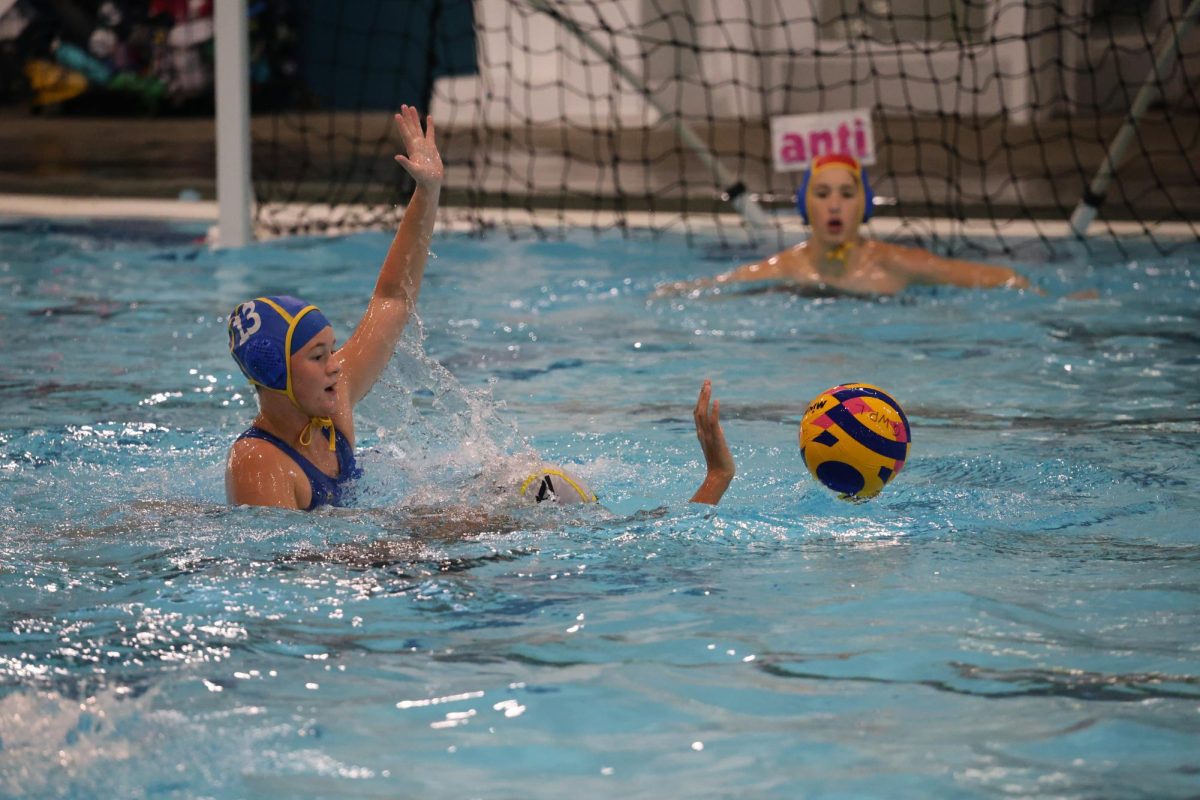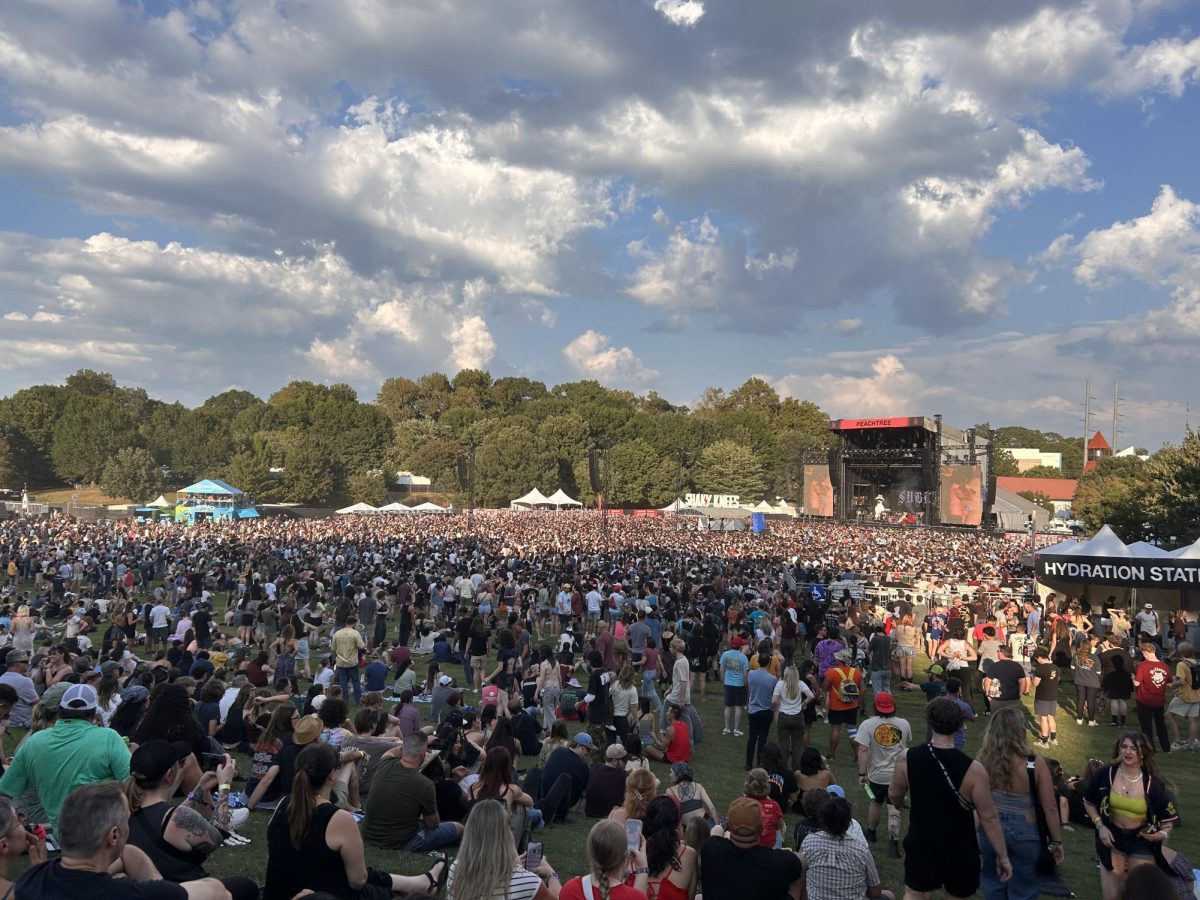Science Department 2.0
February 1, 2022
Back to the Course Catalog here.
AP Physics
AP Physics as a year-long AP alternative to the required course that is regularly taken by juniors. The class focuses on the principles of physics like motion, gravity, and forces but moves at a more accelerated pace to cover all of the subject matter that is on the AP Physics exam at the end of the school year. AP Physics is a math-heavy course that requires some math ability, although AP Calculus prepares students especially well for the course.
“AP Physics is a math based science class. I would not take this class if you haven’t taken Pre-Calculus,” said Morgan Warfield (‘21).
While there is no math requirement prior to taking AP Physics, the class can present challenges if you don’t have the mathematical ability.
“In all honesty, I knew that this class wouldn’t be much harder than regular physics and I could get the GPA boost but I’ve also heard that it goes along with calculus well,” said James Hardy (‘21).
Like many APs, especially in the realm of math and science, students have to be self-motivated in order to succeed.
“[I would recommend this class to] people who are good at science and want to learn it otherwise it’s pretty confusing,” said Nic Yen (‘21).
Many students find that it is very possible to thrive in AP Physics and that getting an A is an attainable goal. However, you have to put in the time and energy to make sure you grasp the material.
“[AP] Physics is a lot of hard concepts but with a very relaxed environment. We take notes sometimes but if you really want to understand the concepts you have to be self motivated and ask lots of questions,” said Lila David (‘21).
AP Physics C vs AP Physics 2
Both AP Physics C and AP Physics 2 expand upon what is learned in Physics 1. AP Physics C is calculus-based and goes over mechanics in the first semester and electricity, magnetism, and particles in the second. AP Physics 2 is entirely algebra-based and only covers the latter material. AP Physics C is typically seen as the harder one, and students who take it suggest also having taken calculus or taking calculus alongside the course.
Both have infamously hard AP tests, as do all AP Physics classes. AP Physics C has two AP tests, one covering first-semester content and one covering second-semester content. In the 2021-2022 school year, both classes were taught by Ms. Cabrices during the same period, as each class only had around 10 students.
AP Physics C
AP Physics C is a physics class typically taken after AP Physics 1. AP Physics C actually includes two classes in one year, with the first semester focused on mechanics and the second on electricity and magnetism. Each section has its own AP test as well. Throughout the year, the course is heavily math-based, using calculus to solve a variety of problems. Students would benefit from taking calculus alongside or beforehand.
“It’s a heavy calculus course. From day one you’re doing differentiation. By the end of week one, you’re doing [basic] integration,” said Eric Baker (‘22).
If you’re interested in physics topics not covered in Physics 1, this might be a great choice.
“You’re getting to learn about like magnetism and electricity, which we didn’t get to spend a whole lot of time on in AP Physics 1,” said Nardos Aynalem (‘22).
The class takes place in the same period and room as AP Physics 2, so the class is somewhat self-taught.
“With ALT it’s become a lot more like a normal class because she just lectures sometimes to both, and then you have extra time to work with her,” said Baker “But it’s a lot more self-taught. […] It’s not a particularly demanding course in terms of [the] amount of work. But the work itself is difficult.”
The teacher, Marie Cabrices, still engages in lectures, examples, and discussions with the students.
“It’s generally a pretty slow pace lecture where you’re encouraged to ask a lot of questions, So you’re going to end up doing some classwork for homework. And then when you’re not working and when she’s not lecturing to the other class, she’s open for questions or helping you solve problems,” said Baker.
As for the workload, students should expect to receive assignments on a regular basis. Like many science classes, there are more labs than projects. Class time is given for work, but there is still some work that must be done outside of class.
“We do like a lot of WebAssign stuff, which I know that a lot of people don’t tend to enjoy. But […] she always gives us time in class to do all that kind of stuff. She’s always there if you ever have any questions,” said Aynalem.
Those who take this class should have a genuine interest in physics. If physics isn’t your favorite, there are other science classes offered that might pique your interest.
“If you had any sort of interest in physics […] then I would say I think you’re gonna enjoy the class,” said Aynalem.
Additionally, due to the combined nature of the class, students should be committed to learning and understanding the material, even if it means taking some time outside of class to do so. Another thing to note is the notorious difficulty of the AP Physics college board exam, so if you are trying to get college credit that is an important consideration. Despite the difficulty, the class environment is very “chill” and Ms. Cabrices is a great teacher.
AP Physics 2
AP Physics 2 is a science course taken mostly by seniors. The class is algebra-based, as opposed to AP Physics C, which uses calculus. Both classes take place in the same period and room and both have the same teacher: Ms. Cabrices. The course expands upon Physics 1 (typically taken junior year) with new areas of physics knowledge.
“Physics 2 is essentially an extension of Physics 1. It’s all algebra-based,” said Turjoy Paul (‘22). “We learn about electricity, particles, and wavelengths and stuff like that.”
The class is slightly more difficult than AP Physics 1, but the workload is “manageable.”
“I’d say it’s a little bit harder than physics one, just because all the units in this are complicated,” said Dylan DeSimone (‘22). “The workload’s pretty lenient because she has pretty lenient deadlines, but it is a lot of content.”
Despite the class’s combined nature, Cabrices still engages with most groups of students through notes and help with problems. It’s not too different from any normal science class, the students in each course tend to “stay in [their lanes].”
“Mainly, you’ll get the engagement through the notes, but if you have a question, if you ask her, she will explain it and work out the problem,” said DeSimone.
On any given day, students can expect to take notes on various physics concepts, do labs, and do assignments.
“It’s very conversational, you essentially work with the people around you a lot. And we do a lot of experiments and notes and stuff like that,” said Paul.
If you are looking to expand upon the ideas learned in Physics 1, but don’t want to deal with calculus, AP Physics 2 might be a great choice for you.
“If you’re into physics and math, take [AP] Physics C, if you want to learn more than you learn in Physics 1 about other areas take Physics 2. But if you’re not that into physics, or you’re only slightly interested, I would not recommend it,” said DeSimone.
AP Chemistry
While all Chamblee students are required to take regular Chemistry in 10th grade, some students choose to take AP Chemistry in order to further their knowledge. The class is typically taken by juniors and seniors as an elective, although it can be used to fill students’ final science credit in their senior year. The class is heavily self-directed, meaning that students interested in taking AP Chemistry should be self-motivated and have strong work ethics.
“AP [Chemistry] is definitely a hands-on class that really challenges you to learn things on your own and focus on what you need to learn specifically. Dr. Z usually puts files and videos on Verge, but the main way that I learned through AP Chem was through the lab experience itself,” said Sahara Heatherington (‘20).
It is recommended that you at least have an interest in the STEM fields before taking this class.
“I would recommend the class to students who are independent and like hands-on learning. I would also recommend the course to students who did well in chemistry sophomore year, specifically to rising juniors because the information you learn can be used in AP Bio senior year. Plus if you take chemistry in your junior year you are likely to remember the concepts you learned during sophomore year — and you use those concepts a lot!” said Heatherington.
Most students agree that enjoying 10th grade chemistry is the first indicator that you might like AP Chemistry.
“I actually found general chemistry interesting and it also aligns with my future career aspirations,” said Victor Lim (‘21).
Although AP Chemistry is notoriously difficult, students who enjoy the class will tell you that the hard work pays off.
“The best part of this class is the freedom we have to work on our own things and the experiences we collect through labs,” said Debbie Kitzler (‘20).
Forensic Science
Forensic Science is one of Chamblee’s newest classes, taught this year by Jennifer Meyer to an almost entirely senior class. It’s not to be confused with Speech/Forensics, a public-speaking based english elective.
“It’s basically learning about the different components of crime scene knowledge such as toxicology and learning about the different types of evidence,” said Kristina Perez (‘22). “We also learn about the jobs of forensics.”
The class itself includes labs, like a typical science class, but meant to highlight parts of the forensics process. Students interviewed mention labs including drawing crime scenes, creating fake crime scenes around their houses, recording fingerprints, etc.
“In forensic science, we learn about the science of forensics so we learn about ballistics like bullet holes, shell casings, and how to collect stuff like that,” said Owen Maas (‘22). “Right now we’re learning about the types of drugs and how to collect them, and people who collect them, so it’s just basically stuff you see on CSI.”
The class typically uses Google Classroom for assignments, and watches Forensic Files every Friday, according to students. Students mention not having much homework, so long as they use their in-class time. “I think we get maybe homework twice a week,” said Maas. Before tests, Kahoots and Quizziz are used to review.
“I wish I had known how much note-taking it would involve, but regardless I would still recommend taking it because it’s a very interesting and fun class,” said Perez.
Meyer is described as strict when it comes to her no-phone policy. “She definitely doesn’t screw around but she’s a very nice teacher,” said Maas. However, she is said to be lenient when it comes to late work. “I would say the culture is very good. It’s a very chill class,” said Maas. “The teacher is very lenient with late work and doesn’t give out a lot of assignments and it’s just an overall fun class.”
Tabitha McLeod Jones (‘22) says, “If you enjoy learning about law and science, this is the class for you.”
Environmental Science
Environmental science (not to be confused with AP Environmental Science) is a science credit class typically taken by upperclassmen, especially seniors. Students who sign up should expect to learn about animals, humans, and their interactions with the environment and each other.
“This course is about the different factors of our living earth, such as biotic and abiotic factors and how they all fit together in our environments and ecosystems,” said Jacari Waller-Watkins (‘22). “We learn about organisms’ roles and how they perform them as well as different environmental situations, such as pollution and natural disasters.”
Students who take the class won’t find themselves strapped with loads of homework. Most assignments shouldn’t take too long, and time in class is provided.
“We really don’t do much when it comes to working outside of class as long as you do the things she asked you to do in class, which is not that much at all. You really won’t have anything to do outside of classes unless we get a project,” said Victor Walls (‘22).
The more relaxed atmosphere does not mean that students will get away with not doing any work.
“The class requires a good amount of writing every day in class, as we do daily warm-up questions and vocab. This is probably the only writing you’ll have to do in the class as everything else is either online or hands-on,” said Waller-Watkins.
With quizzes happening typically once a week, students benefit from taking notes and paying attention.
“She does a lot of pop quizzes,” says Ellis Inman (‘22).
While relatively frequent, the quizzes aren’t excessively difficult.
“[The quizzes] are not very hard […]. Just like, ‘Were you paying attention in class?’” said Walls.
It’s taught by Ms. Meredith Kinsler, who is a favorite of many students. “Best Science teacher,” said Inman.
In general, Kinsler is flexible with students on matters such as late work.“Ms. Kinsler is a pretty lenient teacher but she can also be strict when she needs to. She’s very fair and is more than willing to help students as long as they’re willing to put in some work,” said Waller-Watkins.
Ms. Kinsler makes the class enjoyable and the discussion-based nature means that students can be more engaged. “It’s really fun. She jokes around a lot. She’s really nice to her students,” said Walls.
For some students, selecting the AP version of the class might have been a better choice.
“Honestly, I suggest that you take the AP, especially if you need a grade boost and you like science,” said Walls. “I wish I had taken the AP version, but definitely take the class. I would not take anatomy over [environmental] science.”
AP Environmental Science
AP Environmental Science, or APES, is an elective science primarily taken by juniors and seniors. The course focuses on the environment, it’s different attributes, and how humans affect it. This class is unlike any other here at Chamblee and is unique because the subject matter covered in APES is rarely covered in any required high school curriculum.
In the past the class has been taught by Shaheen Begum and DeAnn Peterson (Ms. Pete), but during the 2021-2022 school year it has been taught for the first time by Renee Pascale, as well as Peteterson due to Pascale’s maternity leave.
“APES consists of lots of notes and pretty frequent labs that cover the material for whatever unit we are on. Although the class is centered around environmental issues and concerns, we cover a lot more than just what’s wrong with our environment and the human impact we have. We’ve covered ecology sciences (biomes, trophic levels, cycles), human population and growth and development, and lots about biodiversity,” said Olivia Castro (‘21). “As someone who enjoys learning about things that are relatable and affect me, I really like this class compared to others (aka chemistry) because it’s applicable to things I see on a daily basis.”
Some may consider APES to be an easier AP because of the subject matter and, in turn, an easy way to boost your GPA.
“I wanted another AP science and from what I heard it was a pretty easy class. I would definitely say I enjoy the environmental science subject,” said Ryan Bray (‘21).
Most students would agree that APES is on the easier side of the spectrum of AP difficulty, but students still have to work to keep an A in the class.
Articles featuring the class:
Fridays for Future Chalk up a Win for Environmental Activism
AP Bio
Like AP Chemistry, AP Biology is a college-level biology course meant to further student’s required biology education, taught by Dr. Mary Wagner. The class is usually taken by upperclassmen interested in STEM.
“It’s the higher level course from either freshman or sophomore biology so, we cover the topics in-more depth and we go into detail on some of the things we skimmed over back in ninth grade or 10th grade,” said Carly Aitken (‘22).
The workload is seen as considerable.
“We do reading guides. And sometimes we do like mini projects and stuff that can take up. They’re not hard but they take up a lot of time,” said Aitken. “Going through the textbook and making sure you know the material and are prepared for a test or class.”
However some students describe it as more classwork than homework.
“Compared to other teachers […] AP classes, not really much [homework],” said Kamora Kemp (‘22). “You get a lot of the work done in class instead.”
However, tests are considered quite difficult according to Aitken, “the tests are pretty in depth and they can be a little bit difficult.”
The highlight of the class seems to be the labs. “I love the labs, they’re very fun,” said Aitken. They require more writing than students expect, according to Kemp but are still great. “[There’s] a lot of writing the first semester, but a lot of fun labs, and you really do get to learn a lot about AP Bio,” said Kemp.
The AP Test includes short-answer questions (SAQ’s) which mean there is lots of writing practice in class.
In comparison to the required biology classes, “there’s a lot more stuff to remember and also it just goes more into depth of what’s like,” said Kemp. “Like photosynthesis [for example] W.e go more into knowing the chemical formula and all of that while in microbiology class, we just know that photosynthesis equals food for plant good.”
Kemp says that “Dr. Wagner really tries to make it interactive,” as well. “She switches out groups so you meet not all your peers at least you meet all your peers.”
Wagner is described as lenient with late work if you email her and explain the circumstances. “Dr. Wagner is very understanding and open to listen to you,” said Kemp. “She really is a very communicative teacher and there’s no problem going up to talk to her whether it’s about your grade or just how you‘re doing.”
The classroom is described by Aitken as “very collaborative. I’ve enjoyed interacting with everyone and everyone seems to have a similar passion for science and biology in particular. […] It’s always very lively.”
Anatomy
Anatomy is the general science course for seniors. Students learn about the body systems and their functions. “What we’re learning now is the senses and special senses,” said Emily Adams. “General senses, which are like the receptors you have all over your body, and special senses, like your eyes, ears, mouth, and nose.”
Many of the assignments come from an interactive notebook, reminiscent of 9th grade biology. “It’s basically all interactive notebook,” said Sahara Hetherington. “We take notes, and then we have homework assigned in the textbook, and that’s basically it. Now that it’s second semester, we’re doing dissections.”
For many students, the best part of the class is the teacher, Leila Warren. “My favorite parts of the class are Ms. Warren’s energy and the way that she presents information to us,” said Mary Axelson. According to Zoe Kehoe, “Even if you’ve never liked a teacher before, you will most likely like her.”
All students surveyed reported that the work is consistent, but easy to understand. It doesn’t take hours, but prospective students should expect to do homework every night. “The work isn’t unbearable,” said Hetherington. “But there is homework every night, so it’s like you always have to be doing something for the class. It’s not hard, but there is always something to do.”

